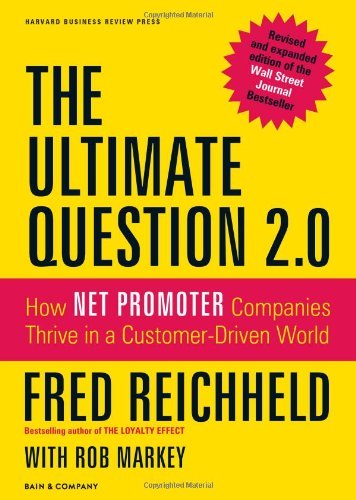 Two years ago, Fred Reichheld released The Ultimate Question 2.0 — a business book about the concept of the Net Promoter Score and how it can change your business. Here at The Starr Conspiracy, we take Net Promoter Score as a way to measure client and employee satisfaction very seriously. The concept for the NPS was originally suggested by Reichheld in 2003, when he called it, “the one number you need to grow.”
Two years ago, Fred Reichheld released The Ultimate Question 2.0 — a business book about the concept of the Net Promoter Score and how it can change your business. Here at The Starr Conspiracy, we take Net Promoter Score as a way to measure client and employee satisfaction very seriously. The concept for the NPS was originally suggested by Reichheld in 2003, when he called it, “the one number you need to grow.”
The employee Net Promoter Score (or eNPS) takes the idea of the NPS for customers and applies it to your team’s level of engagement by asking the same question:
How likely are you to recommend working at The Starr Conspiracy to a friend or colleague?
Typically, you’ll include an optional text response field for why the participant chose that answer. Your employees answers to this question (in the case of eNPS) will divide them into three groups:
Promoters are those who score between 9-10 and are loyal enthusiasts who will recommend working at your company, and who are typically more engaged in the workplace.
Passives are those who score between 7-8 and are satisfied but unenthusiastic employees who could potentially be lured away by competitive employers.
Detractors are those who score between 0-6 and are unhappy employees who could be considered detrimental to business growth if they remain unengaged.
To discover your employee Net Promoter Score, you will take survey responses and subtract the percentage of detractors from the percentage of promoters, leaving you with a percentage you can label “eNPS.” Because the NPS system uses such a short, easy survey to complete, the results are easy to interpret and share across key stakeholders and the survey can provide important benchmarks for future growth.
Those who use the NPS system to monitor employee engagement and satisfaction assume two things to be true about employee engagement and satisfaction:
-
When employees are satisfied and engaged, employers can see lower costs. By reducing both voluntary and involuntary employee turnover, both costs and productivity can improve over time. When you have real insight into how your employees think and feel about their work, you can develop strategic ways to drive higher engagement within your organization, leading to higher employee loyalty over time.
-
Highly engaged employees drive customer loyalty. Happy employees = happy customers, right? That’s the case that Reichheld makes in The Ultimate Question 2.0 using extensive research on the link between employee satisfaction and customer loyalty.
If you want to get started with your own eNPS program, there is a wealth of research out there on how to implement it within your organization — starting with the book The Ultimate Question 2.0. Some organizations are shocked to see that eNPS can be either substantially lower than customer scores (if employees hold their company to higher standards or understand the ins and outs of the Net Promoter Score system), and others are surprised to see the opposite. So before you kick off any version of the Net Promoter Score within your organization, be sure to discuss what you will do with the data and what kind of numbers you are expecting to see.
If you need a partner to roll out your Net Promoter Score, give us a call. We have helped many organizations in your situation — looking to make informed decisions and grow their perspective in their business from both the customer and employee sides — implement successful Net Promoter Score and eNPS programs. We would be happy to help.


